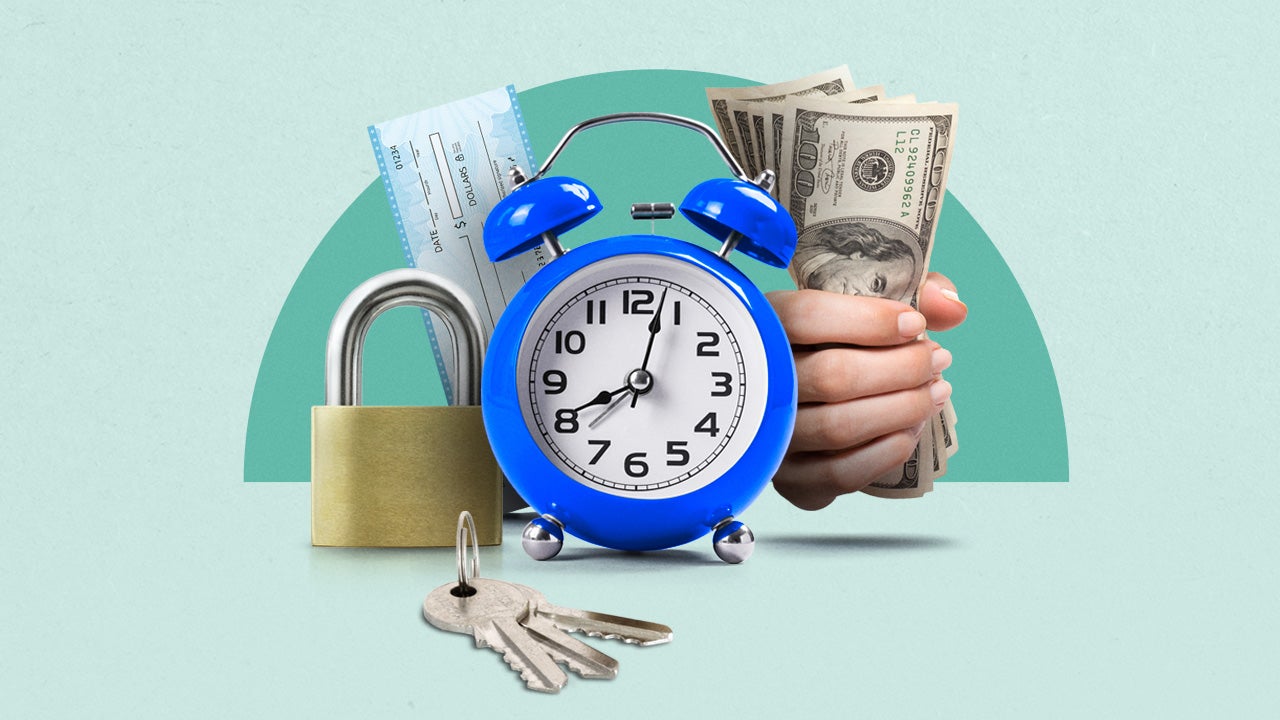National Savings Day: 4 bank accounts to grow your savings

Oct. 12 is National Savings Day, so there’s no better time than today to consider smart ways to manage your finances. For anyone looking to increase their savings, many banks have been sweetening the deal by raising their deposit account rates, in response to the Federal Reserve hiking interest rates 11 times since March 2022.
Most banks offer several types of interest-bearing accounts, and the right one for each person can vary based on unique factors such as income, expenses and the amount of money in savings. Here, we’ll go over four types of bank accounts that earn interest, how they work, and who can benefit the most from them.
1. High-yield savings account
What it is: A high-yield savings account provides easy access to your money and earns a competitive rate of return. The best high-yield savings accounts are earning annual percentage yields (APYs) these days that outpace the rate of inflation.
Current high-yield savings account rates: Not all savings accounts are created equal, especially when it comes to interest. While the average savings account rate is currently just 0.57 percent, top high-yield savings accounts are earning APYs as high as 5.25 percent, or nine times the national average.
The best high-yield savings account rates can often be found at:
- Online-only banks, which may offer the high APYs as a way to draw customers from traditional banks
- Credit unions, whose profits go back to members, allowing them to pay higher yields
Large brick-and-mortar banks typically pay rock-bottom rates on their savings accounts, often around 0.01 percent APY.
Who is a high-yield savings account best suited for? Everyone should have a high-yielding savings account because it provides easy access to your money, as well as a means of growing your greenbacks, making it a great place for your emergency fund. Be sure to go with a savings account that earns a high yield, many of which offer rates that are above 5 percent.
“When it comes to a savings account, you want liquidity because you don’t know when you might need the cash for an emergency or other sudden expense,” says Gary Zimmerman, CEO of MaxMyInterest.
What to watch out for: You’ll want to avoid a high-yield savings account that charges monthly service fees or ATM fees that could eat away at your balance. It also pays to read the fine print to make sure you’ll qualify for an account’s APY.
“Some banks have hoops for you to jump through in order to earn a certain rate, such as a minimum balance or a certain number of direct deposits each month,” Zimmerman says. “It’s like when you go to the county fair and play the game to throw the rings on top of the bottles, which is very difficult. Few people are going to win the giant stuffed animal.”
2. Certificate of deposit
What it is: A certificate of deposit (CD) locks in your funds for a set amount of time, in exchange for a guaranteed APY. A CD that earns a competitive yield can be a good choice for funds you’re willing to lock in. Accessing your money before the term expires, however, usually results in an early withdrawal penalty, typically at the cost of the interest you earn.
Current CD rates: Yields on competitive CDs are many times greater than the national average yields.
| National average Oct. 9, 2023 | Rate currently available on a competitive CD | |
|---|---|---|
| 1-year CD | 1.75% | 5.65% |
| 2-year CD | 1.48% | 5.00% |
| 3-year CD | 1.39% | 4.85% |
| 4-year CD | 1.46% | 4.65% |
| 5-year CD | 1.44% | 4.65% |
What to watch out for: Don’t commit money to a CD that you may need before the term expires. This often results in an early withdrawal penalty, which can eat into your interest and sometimes even your principal. Any money you may need in the short term is better off in a liquid savings account.
CD rates may increase slightly if the Fed decides to hike rates once more in 2023, so this is something to consider before locking your money into a CD right now.
3. Money market account
What it is: A money market account is an interest-bearing account that’s similar to a savings account, although it usually offers some checking account features as well. A money market account may come with checks and a debit or ATM card, although banks may limit the number of withdrawals and transfers allowed per month.
“The main difference between a money market account and a savings account is with a money market account, often clients can write checks if they want to, whereas with a savings account you can’t write checks,” says MaxMyInterest’s Zimmerman, who also says there’s not a big difference between the two, otherwise.
Current money market account rates: Top money market accounts are currently earning APYs of 5.25 percent. It pays to search for a competitive account, since the national average money market account APY is only 0.46 percent, or around 12 times less than high-yielding accounts.
What to watch out for: If you’re looking into opening a money market account, pay attention to minimum deposit requirements, as well as whether the account has a tiered APY structure that pays higher rates to higher balance thresholds.
What’s more, money market accounts often impose limits on the number of checks written or other withdrawals made per month. You may find you’re better off with a checking account if you intend to use the account for many transactions.
It’s important to note that a money market account is different from a money market fund. A money market account is typically a federally insured, liquid bank account, whereas a money market fund is an investment product that’s not federally insured.
4. Interest checking account
What it is: An interest checking account allows for everyday transactions while earning a rate of return. Also known as an interest-bearing checking account, it can be a practical choice for anyone who wishes to keep their money in one account, as opposed to having separate checking and savings accounts.
Current interest checking account rates: The average APY earned by interest checking accounts is 0.05 percent, according to Bankrate’s 2023 checking and ATM fee survey.
It’s possible to earn a higher APY on a checking account, and accounts on Bankrate’s list of high-yield checking accounts currently offer APYs between 1.1 percent and 4.62 percent. However, some of these accounts aren’t widely available and only pay the high yield when a set of requirements are met.
What to watch out for: To earn a substantial APY on an interest checking account, you’ll likely have to meet one or more requirements regarding a minimum balance, direct deposits, or number of withdrawals. What’s more, some interest checking accounts pay a higher yield on part of your balance, whereas the remaining portion earns a much lower yield, or none at all.
Ultimately, when it comes to earning the best possible yield, you’ll likely find you’re better off having a noninterest-bearing checking account and transferring your extra money to a high-yield savings account.
Bottom line
Yields on competitive deposit accounts have been rising along with 11 Federal Reserve rate hikes since spring of 2022. This makes it an especially good time to grow your savings and make sure you’re in an account that’s earning a top yield. Bank accounts that bear interest include savings accounts, CDs, money market accounts and interest checking accounts. It pays to understand their differences and decide which are the best fit for your unique financial situation. No matter which you choose, make sure they come with Federal Deposit Insurance Corp. (FDIC) or National Credit Union Association (NCUA) insurance.






